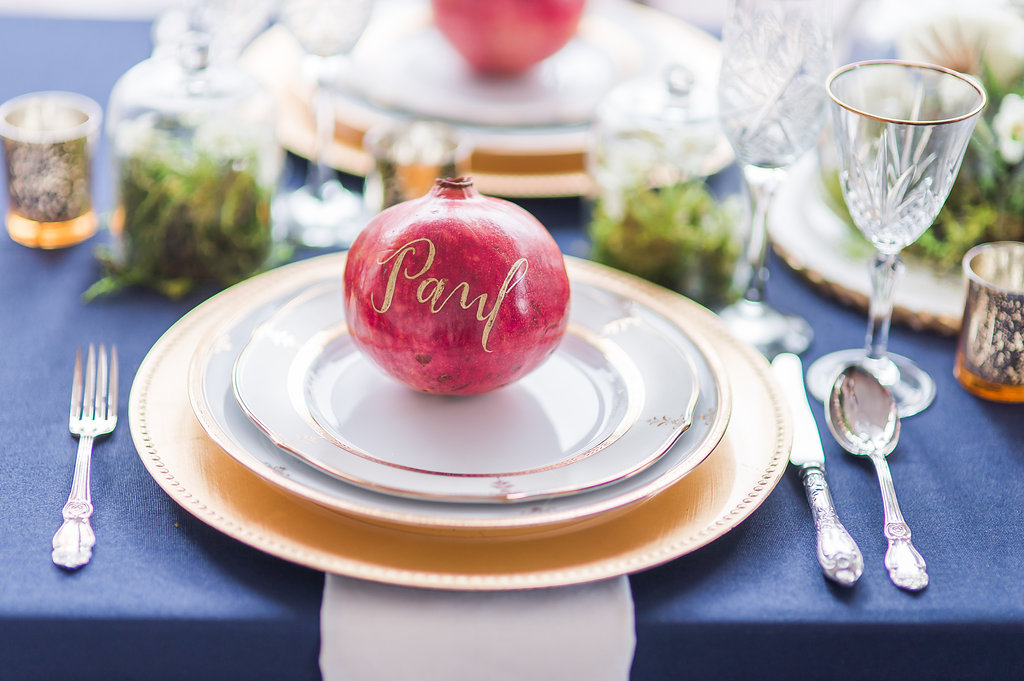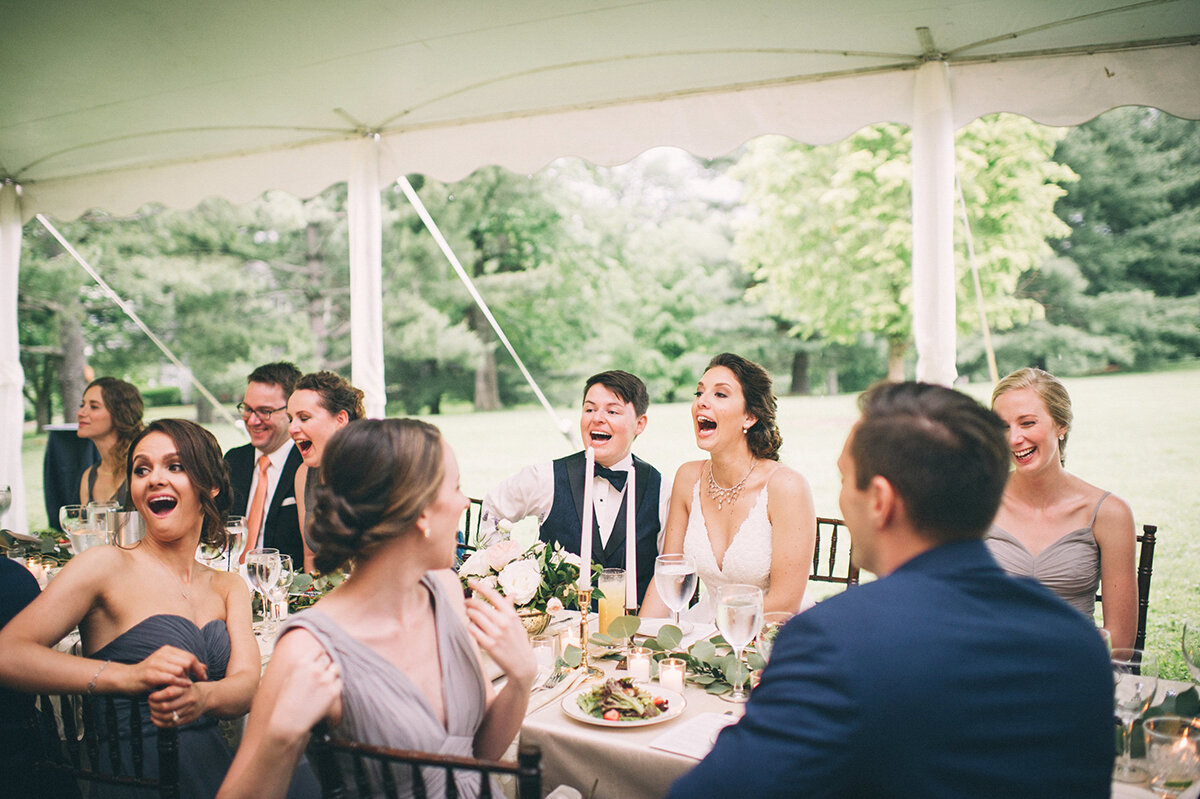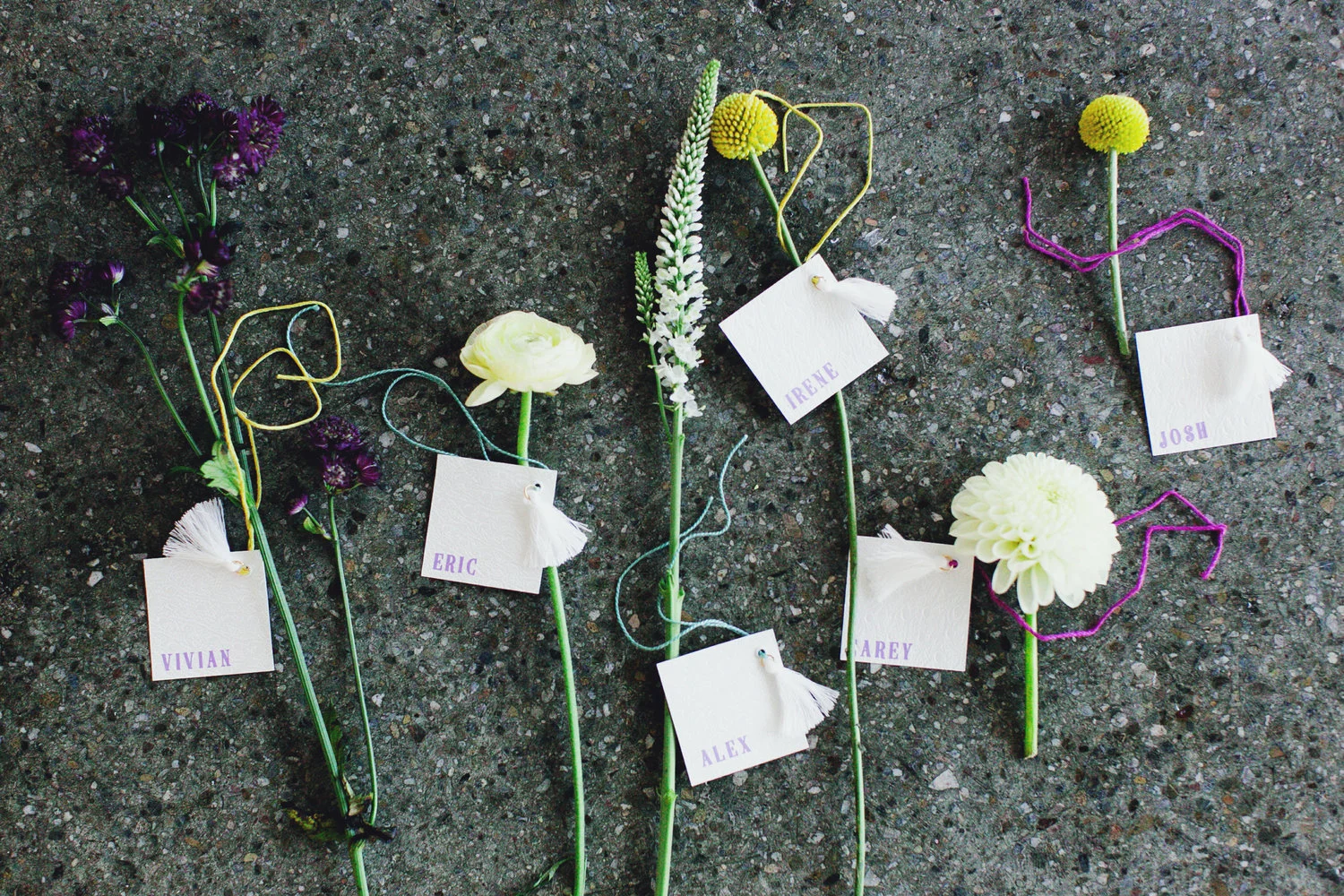Everything to Know to Make Your Wedding Seating Plan a Success
/You’ve booked all your vendors, the RSVPs are in, and now you’re faced with the last great feat of wedding planning: making your wedding reception seating plan. Many couples struggle with creating a seating plan that ensures guests will enjoy themselves and get along during the wedding reception, especially if you have a number of guests coming together to celebrate who have not met before. Some couples even consider ditching the seating plan altogether, but that can cause just as many headaches.
We checked in with the wedding pros in our vendor directory and here are all of their tips for how to ensure your seating plan is a total success.
First, How Formal Is Your Reception?
Having a formal reception is not a requirement for your wedding, so you first have to determine what overall vibe you’re hoping to achieve for you and your guests. Are you serving a full meal? Are you serving a buffet? Is it a cocktail and hors d'oeuvres situation? The formality of your reception may influence how you approach your seating chart.
Your budget may dictate how formal your reception is, but your guest list may also be a factor, as Atlanta wedding photographer Raven Shutley of You Are Raven notes. “It completely depends on your crowd! Do you have a lot of folks who would get along if given an introduction? Seat them! Do you have a lot of shy folks who are more comfortable with their squad? Let them roam freely!”
Even if your guests are happy to roam, if you are serving food, you will want to make sure you have some seating available for guests. North Carolina wedding planner Erica Greenwold Reisen of Folie à Deux Events shares “I always recommend table assignments unless you are just having a cocktail reception.” Not everyone is able to or will enjoy standing for a long period of time, and table assignments ensure that everyone has a seat to call their own and a place to drop their belongings.
Assigning Tables vs. Assigning Seats
If you’re serving a full meal at your reception, seats and tables are a must, but again, whether or not to assign tables only or to assign individual seats will depend on a number of factors.
Are You Having a Buffet?
If your guests are able to fill their own plate from a buffet, then assigning guests to tables rather than individual seats may work for you. Do your best to assign friends and family members to a table with other people they know, and only allow one table to go up to the buffet at a time to avoid chaos and long lines.
Even with a buffet, though, seat assignments can work in your favor. “People do love having direction,” says Raven, “so even if you’re keeping people with whom they’d normally sit with, it can be nice to save them from making the choice themselves.” Assigning seats can give everyone some guidance and can help avoid confusion, especially if folks have already had a few drinks or are getting hungry.
Are You Serving a Plated Meal?
“Seating assignments are necessary when there is a plated meal where guests make meal selections or if you have a lot of guests with special dietary needs,” says Erica. Your serving staff needs to know exactly where everyone is seated to ensure that a guest with food allergies doesn’t end up with a potentially dangerous meal. Plan to have a place card at each seat, and also consider coming up with symbols or menu indicators to add to your place cards so that serving staff has further guidance for who gets what meal.
What Type of Tables Are You Using?
New York City wedding planner Meg Hotchkiss of LVR Events notes that the type of tables you have at your reception may also dictate whether or not you should assign individual seats. “With long banquet style tables (especially when they're combined to make super long tables), I find that it’s typically best to assign actual seats for several reasons. Unlike round tables where couples will normally sit next to one another, with rectangular tables you will have some couples who fill in side by side and others who will fill in across from each other. Then when you add in singles/families/odd numbers, it can result in random single seats or split couples.”
Splitting up couples by accident can cause a lot of stress for guests at a wedding. Sometimes, only one member of a couple may know the marriers or other guests, so if their plus one ends up without a seat next to them, it can cause a great deal of frustration and anxiety, especially if that person is a bit on the shy side.
Meg does note that long banquet style tables that are joined together can actually be a great solution to ensure friend groups and family members get seated together “If you assign seats, you can merge groups across multiple tables,” she says. “For example, you have The Smith Family of seven sitting at table #1, leaving you with one open seat. You can begin to seat the Jones family at table #1 by assigning one of the seats adjoining with table #2 to a member of the Jones family.”
Again, this type of seat assignment puzzle solving only works if you have assigned seats instead of open seating. “If the seating is open at table #1, there’s no way to guarantee the seats that adjoin table #2 won’t be filled by Smiths, leaving poor Mr. Jones sitting away from his family,” says Meg.
How to Decide Who Sits Where at Your Reception
Now that you know which approach you want to take to creating your seating plan, it’s time for the really hard part: deciding exactly where everyone will sit. Meg has lots of great advice for couples creating a seating plan over on her site, including template spreadsheets to make your life easier, but primarily she advises that you break your guests down into three categories for seating.
The Wedding Party
“You can choose to seat your wedding party at a head table or you can mix them into your friends/family groups,” says Meg. “Regardless of where they sit, please don’t be a jerk and separate them from their dates.”
Your Families
“Where the parents and immediate family sit really depends on a few factors such as relationship and size,” notes Meg. “If your parents and your partner’s parents get along, why not seat them at a table all together. This is also a good place for grandparents and your officiant, if they’re invited to dinner. This is also a great option if one of you has a small family or if one set of parents isn’t inviting any friends or colleagues.”
But if your family is large or doesn’t always get along, Meg has advice for you, too. “If your parents want to sit with their friends and family, then you can have two parent tables. If you have parents who are divorced, then you can let them each host their own table. I’ve worked on weddings where both sets of parents were divorced and remarried and therefore we had four parent tables.”
Everyone Else
“Mix and match to your heart’s content!” says Meg. “The best seating plans have a mix of old friends and new friends at each table. This is your opportunity to make thoughtful introductions to people from various parts of your lives.” But Meg warns not to stick all of your single friends at one table. “It’s awkward and obvious every time. If there are people you’re dying to set up, seat them next to one another at a table that has some couples, too.”
The same rule doesn’t apply to putting all the kids together, however! “If you’re having kids attend, it’s lovely to give their parents a break and set up a kids’ table. If they’re small children, though, seat them with their parents.”
Still Feeling Overwhelmed by Seating Assignments?
If you feel like you simply can’t look at your seating plan for another minute, it’s totally okay to ask for some help. “Delegate!” says Meg. “Let your parents figure out where their friends and family members will sit. Assign your parents a list and make them do some work. Nine times out of ten, they’ll be thrilled to have a way to contribute.”
Communicating Your Seating Assignments
Once you’ve decided whether or not to assign seats and how to split up all of your guests, the last challenge is figuring out how to communicate your table or seating assignments to your guests. The good news is there are a limitless number of ways to communicate your seating chart. This is the perfect place to really get creative, from traditional paper place cards to labeled flower bud vases that guests carry to their table and that double as decor, there’s one piece of advice our vendors highly recommend:
Organize Seating Assignments Alphabetically By Last Name, Not By Table Number
We’ve seen so many creative seating charts that organize the assignments by table number, but wedding planner Meg Hotchkiss suggests that might not be the best way to communicate these assignments to your guests. “Guests don't know their table and it takes FOREVER for people to read through the whole chart to find their name. Guests don’t know which table they’re at (hence the chart), but they all know their own last names! Alphabetize!!!!!”
No matter how you choose to communicate your seating chart, sticking to these guidelines should help everyone find their seat and have a wonderful time at your reception.
JEN SIOMACCO
Jen Siomacco is the CEO and Editor-in-Chief of Catalyst Wedding Co. She works to mesh together her love of feminism, love stories, accessibility, equality, and design into the Catalyst brand. When she’s not traveling the country working to make the wedding industry a more inclusive place, she’s writing on her couch and snuggled up with her husband and SUPER lazy cats.
Photo by Tiffany Josephs Photography

























